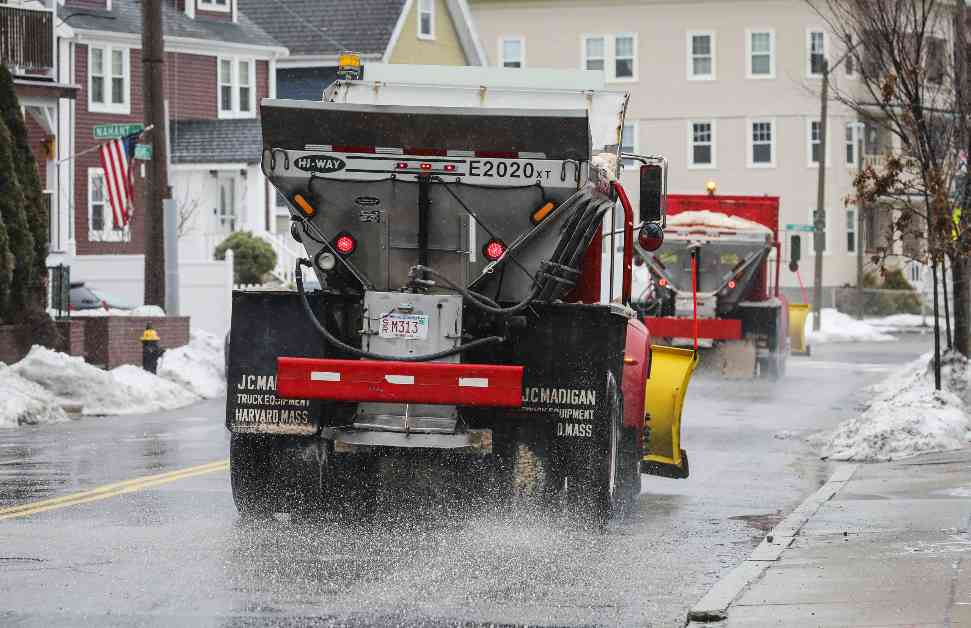Earlier this month, a blast of frigid air and heavy snowfall swept across the United States, prompting many states to coat roads with salt to combat icy conditions. While this practice helps ensure safe driving, it comes at a cost to the environment, as research indicates. Approximately 25 million tons of salt are used on roads in the U.S. annually, with much of it washing into freshwater ecosystems, elevating salinity to levels that can pose risks to both humans and wildlife.
Salty Species
Winter Salt Awareness Week recently shed light on the substantial impact of road salt usage. The figures are staggering, with 44% of salt in the U.S. being used for de-icing roads between 2013 and 2017. In Massachusetts alone, nearly half a million tons of salt are applied each year for winter road maintenance, according to the U.S. Environmental Protection Agency.
Geologist Sujay Kaushal from the University of Maryland highlighted the pervasive nature of salt in our daily lives, from de-icing roads to household products containing salt. He emphasized the detrimental effects of salinity on the environment, referring to it as an “anthropogenic salt cycle.” Kaushal’s research, including a 2021 study, has shown that increased salt levels in the environment can lead to toxic chemical combinations and reduce freshwater availability, exacerbating the impact of climate change.
Experts warn that the repercussions of road salt usage extend beyond humans, affecting plant and animal species. Veterinarians have observed adverse effects on pets, such as dryness and irritation on their paws. Invasive plant species like Phragmites grasses thrive in saltier environments, outcompeting native flora for resources. Additionally, road salt poses risks to drivers, causing corrosive damage to vehicles and increasing the likelihood of wildlife-vehicle collisions.
Balancing Act
The ramifications of excessive road salt usage are not confined to the United States. Ottawa Riverkeeper in Canada has been monitoring chloride levels in water samples from various locations, revealing chronic toxicity due to high salt concentrations. The organization’s director of science and policy, Larissa Holman, expressed shock at the consistently poor water quality, emphasizing the detrimental impact of human activities on the environment.
While de-icing salt remains a crucial tool for road safety, the excessive application of salt has prompted initiatives to reduce its usage. Organizations like Wisconsin Salt Wise are educating individuals on responsible salt application, emphasizing the need to strike a balance between safety and environmental preservation. State-led efforts across the Northeast and Midwest, as well as in Canada, are promoting training programs to minimize salt use based on weather conditions and ecological sensitivity.
In recent political developments, the White House’s temporary freeze on federal grants and loans has sparked concerns about clean water access and disaster recovery. Despite the subsequent rescinding of the memo, uncertainty looms over funding for environmental programs and initiatives aimed at combating climate change. The confirmation of key cabinet members, including EPA Administrator Lee Zeldin, signals potential shifts in climate policy, with a focus on revisiting fuel economy standards and climate-related policies.
As the global community grapples with the impacts of climate change, the detrimental effects of road salt on freshwater ecosystems underscore the urgent need for sustainable practices. Balancing safety with environmental stewardship is paramount in mitigating the long-term consequences of excessive salt application. Through collaborative efforts and informed decision-making, communities can work towards a more sustainable future.














